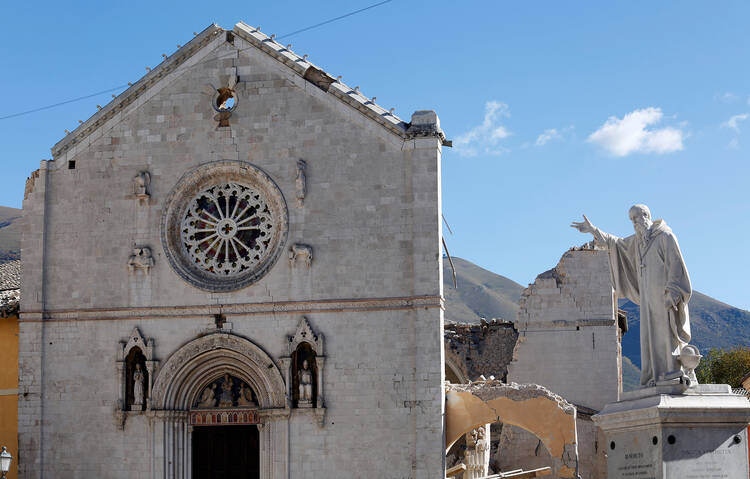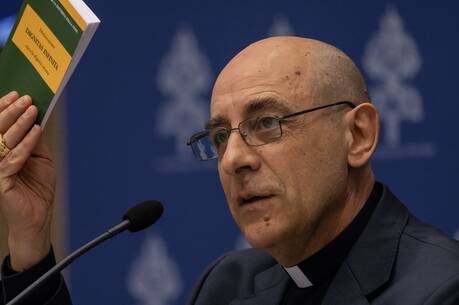The strongest earthquake to strike Italy in more than three decades claimed no lives but struck at the heart of the country’s vast religious and cultural heritage.
The Sunday morning quake on Oct. 30, which measured 6.6 magnitude according to the U.S. Geological Survey, was stronger than the one that killed almost 300 people on Aug. 24, and it struck a region already shaken by tremors last week.
The quake felled several significant churches including the 14th-century Basilica of St. Benedict in the main square of Norcia, which is about 100 miles north of Rome and close to the quake’s epicenter.
Cardinal Gianfranco Ravasi, head of the Vatican body responsible for culture, expressed his “immense sadness for all that has been destroyed including homes and livelihoods, churches and those things made by men to communicate the glory of God.”
“With Norcia destroyed, it is as though the pulsating heart of Europe’s faith and artistic traditions has stopped beating,” he said.
Around 20 people were injured and more than 15,000 people received government assistance overnight after the quake shook an estimated 100 towns from Bolzano in northern Italy, close to the Austrian border and as far south as Puglia in the country’s heel.
Priests in the region have been advised to hold Mass outdoors in the coming days.
Believed to have been built over the birthplace of Benedict, the patron saint of Europe, the Basilica of St. Benedict is considered one of the region’s most important sacred sites and draws nuns and monks from around the world, including the U.S.
"We thought it was the end of everything," 74-year-old Sister Maria Raffaella Buoso told Reuters after she was evacuated from the nearby Monastery of the Poor Clares of Santa Maria della Pace.
On Monday, nuns, monks and local residents knelt in the main square in silent prayer before the ruins of their cathedral and the Benedictine monks pledged to remain in the devastated town.
“Our cradle has vanished,” the Rev. Bruno Marin, superior and rector of the Benedictine congregation, told the media. “We will not leave and we will reconstruct it stone by stone with the help of God. From this wound there will be regrowth. We will go forward.”
Italian cultural authorities estimate 5,000 historic buildings have been damaged by the series of earthquakes that have shaken central Italy in recent months.
The Santa Maria Argentea Cathedral, built in Norcia in 1556, was left in ruins.
The latest quake also damaged one of Rome’s most popular basilicas, St. Paul’s Outside the Walls, as well as other prominent churches in the Italian capital.
In Rome, the dome of the Sant’Ivo alla Sapienza Church, built by celebrated architect Francesco Borromini between 1642 and 1660 and considered a masterpiece of Baroque architecture, was also damaged.
Cardinal Gualtiero Bassetti urged priests in the Umbrian region to celebrate Mass outdoors on Tuesday, which is All Saints’ Day, a religious holiday when Catholics and others remember the dead.
(Josephine McKenna is RNS' Vatican correspondent)








